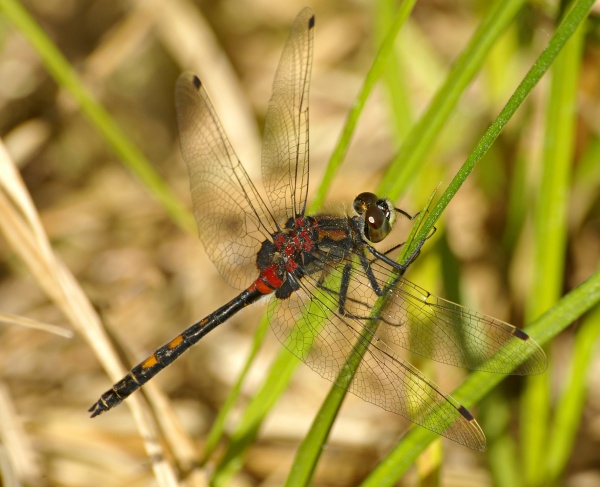Facts About White-faced darter
The white-faced darter, also known as the small whiteface, is a striking dragonfly species distinguished by red and black markings and a distinctive white patch on its head. Part of the genus Leucorrhinia within the Libellulidae family, these dragonflies inhabit wetlands and peat bogs stretching from northern Europe to Siberia. They are most active between April and September.
These dragonflies lay their eggs in clusters of sphagnum moss in acidic water bodies, creating safe environments for larval development. Unfortunately, the white-faced darter faces threats from habitat destruction, pollution, and climate change. Although currently listed as "Least Concern" by the IUCN Red List, their population remains vulnerable.
Adult white-faced darters are easily recognizable by their black bodies adorned with red and orange markings on the abdomen and thorax, especially in mature males. The white patch on their faces makes them even more distinguishable. They are commonly found across western, northern, and eastern Europe, with their range extending to Japan. These dragonflies prefer marshes, wetlands, and peat bogs for larval development. Notably, the larvae exhibit unique behaviors, including active foraging and occasional cannibalism to avoid predation.
Conservation efforts are critical to protect the white-faced darter from threats such as habitat alteration, pollution, and climate change. Various countries have implemented protection acts and plans to safeguard this species. Reintroduction programs have also been successful in restoring populations. However, fragmented populations remain at risk of local extinction due to genetic isolation. Climate change further threatens the species by enabling invasive species to outcompete the white-faced darter. Additionally, the presence of fish in lakes and the practice of liming acidic waters can negatively impact the species.
To ensure the survival of the white-faced darter, conservation efforts focus on preserving suitable habitats and maintaining genetic diversity. By addressing these environmental challenges, we can help secure a future for this unique and beautiful dragonfly.

 Switzerland
Switzerland